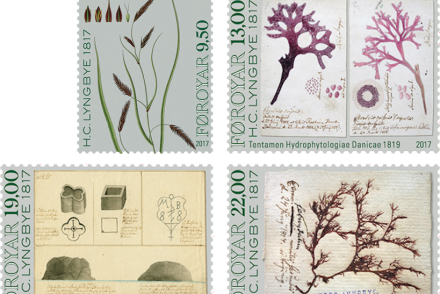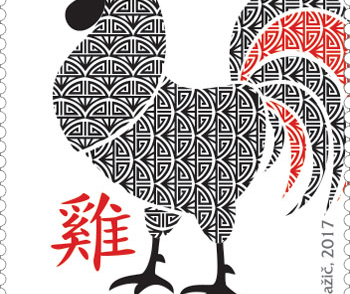Madeira Self-Adhesive
In this Madeira series, the stamps take us on a route that begins with one of the most emblematic events in this archipelago’s popular culture. For a week, the Flower Festival invites tourists and residents to participate in a celebration of the arrival of spring and the fertility and oral abundance characteristic of this period. With processions and parades of allegorical oats, oral art decorations and a visit to the Flower Market, where Madeira’s orists display countless ornamental species, the Flower Festival celebrates the islanders’ special relationship with owers, in a unique show that lls the streets of Funchal with a medley of perfumes, colour and music.
Another option on the Madeira tourist route is to walk the long, narrow paths that follow the levadas. These irrigation channels, the construction of which began in the 16th century, cover hundreds of kilometres over the island, allowing for e cient water distribution and making possible the cultivation of the land and large plantations. But these ancient levadas are not merely an ingenious irrigation system; they also o er an opportunity to discover Madeira’s natural wonders. At the Fajã do Rodrigues levada, through long tunnels and the dense vegetation of the laurissilva or laurel forest, it is possible to admire the stunning views across the São Vicente valley, and a surprising diversity of ora and fauna. Founded in the 12th century, Portugal has a history that is deeply marked by Christianity, so it is no wonder that religious temples are plentiful. The cathedrals, episcopal seats and urban references of the centres of population have, over time, taken on important social and cultural roles beyond their religious functions. It is thus in the centre of Funchal where the archipelago’s main religious temple, the imposing Sé Cathedral, also known as the Church of Our Lady of the Assumption, is to be
found. Built at the instruction of King Manuel I, it became the rst non-continental seat of the diocese. Classi ed as a National Monument in 1910, its interior boasts a retable of great artistic and patrimonial value, ceilings made of local wood, and richly decorated pews in the main chapel.
Known for a long time as a garden in the sea, the island of Madeira is indeed immensely rich in its vegetative and oral diversity, with soil on which everything seems to bloom. A visit to one of the island’s various gardens is therefore not to be missed. Close to the city of Funchal, at around 500 metres above sea level, and with an extraordinary view over the region, we nd the Gardens of Quinta do Palheiro Ferreiro. A true paradise for all fans of camellias, with planting started in the early 19th century, some of the most rare and valuable exotic plants can also be found ourishing here. Visitors are surprised to see oak, beech, chestnut and cedar growing next to eucalyptus and araucaria, such is the diversity of this unique garden.
The unique atmospheric conditions and the fertility of the soil make the island the ideal setting for the cultivation of one of the country’s best known fruits: the banana from Madeira. It is thought that the introduction of the banana tree dates back to the mid 16th century, coming from the Canary Islands or Cape Verde, and since then has been an integral part of the landscape. Smaller than the South American banana, but with a strong avour, it is rich in nutrients and vitamins, with recognised bene ts to health and happiness. Its production has the OR mark of origin and quality, a certi cation of agricultural produce from the Outermost Regions of the European Union. It is therefore no surprise that the banana is currently Madeira’s second largest export.
- 16.01.2018
- Atelier Design&etc / Túlio Coelho
- Bpost
- Offset
- 40 x 30.6 mm, 30.6 x 40 mm




